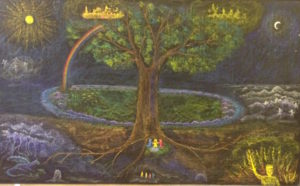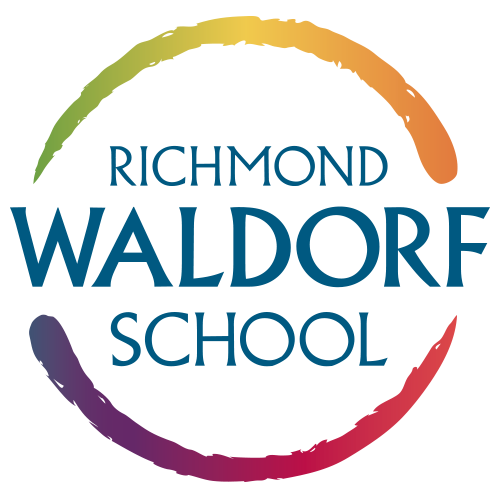Creativity in Action

In a lecture from Soul Economy and Waldorf Education, Rudolf Steiner spoke about how a teacher’s creativity feeds the students’ souls.
“If you tell students what you found in books—no matter how lively you may be—if you tell them what you have read and perhaps even memorized, you will talk to them like a dry and desiccated person, as though you did not have a living skin but were covered with parchment, for there are always death-like traces in one’s own being of what was thus learned from the past.
If, on the other hand, you are creative in your work as a teacher, your material will radiate with growing forces, it will be fresh and alive, and this is what feeds the souls of children.”
[p. 162]
Throughout my career, I have found this to be true. Whenever I create something original—stories, plays, birthday verses, blackboard drawings—the students respond differently than when I re-create something from another source. Not only that, creative work feeds my soul as well.
In fourth grade, students develop their writing skills by copying the teachers’ compositions from the board; by creating their own compositions, play scenes, or poems; and by taking dictation.
When I create a composition for the students to copy, I try to render the topic in clear, succinct, expressive prose, so that the children will absorb those important stylistic aspects and become better writers.
When the students create own original work, they prepare by talking about the subject, so that when they write, they are just ‘talking on paper.’
When I create a dictation, I write passages that benefit from repetition, since each part of the dictation needs to be repeated until the children can write it from memory.
In our current language arts block, the students have been hearing some of the Norse myths. During this block I decided to challenge myself to compose dictations in the form of poems that reflected the Norse poetic style that features half lines with two stressed syllables and alliteration that is sometimes reflected in succeeding lines. The strong rhythms of Norse epic poetry reflect the Norse peoples’ search for power; the alliteration their search for resonance between people, objects, and events.
Here are poems I wrote for the children during the past two weeks:
Gullveig the Golden
Haughty and gleaming, the beautiful maiden
Entered the hall where all the gods sat.
Grief had she brought to the dwellers of Midgard;
Gold lust and greed, unhappiness great.
Spears threw the gods, but they could not pierce her,
Three times they tried to burn her alive;
But Gullveig the golden could not be vanquished;
Curses and war she brought to the gods.
The Duel
Swift through the sky rode Thor the Thunderer,
Ready to battle Hrungnir, the huge.
Fast flew the hammer, Mjollnir, the mighty,
Seeking the giant’s enormous hard head.
Straight flew the hone hurled by the giant,
Hit by the hammer, it broke into bits.
Down fell the giant his head burst asunder,
Pinning the god beneath his huge leg.
Furious Thor lay there held fast by his foe,
Until his son Magni released him at last.
Miraculously, each of these poems was ‘composed’ quickly in the morning at school before the children arrived. I say ‘composed, ‘ but I take little credit for their composition. Like in many other instances, I simply served as a voice for the muse that whispers her wisdom in the ear of all teachers who are privileged to drink from the living spring of the creative word.
And here are some more examples of creativity in action: blackboard drawings from this block.
Roberto Trostli
4th Grade Class Teacher




